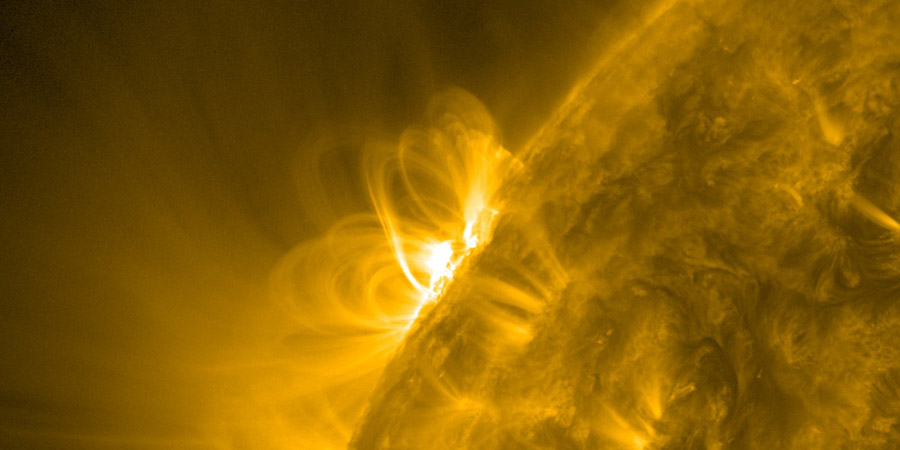G1 storm watch, M-class solar flare
Friday, 14 January 2022 13:45 UTC

The NOAA SWPC has issued a minor G1 geomagnetic storm watch (max Kp of 5) for Saturday evening (15 January) and Sunday 16 January due to the arrival of an anticipated coronal hole solar wind stream.
We find this forecast to be a tad optimistic but nonetheless, high latitude sky watchers should be alert in the days ahead for possible enhanced auroral displays.
A transequatorial coronal hole is facing Earth. Enhanced solar wind could arrive in ~3 days - Follow live on https://t.co/bsXLidnzGh pic.twitter.com/yIqqbxRhQS
— SpaceWeatherLive (@_SpaceWeather_) January 14, 2022
M-class solar flare
An M1.8 (R1-minor) solar flare took place earlier today peaking at 02:03 UTC. This solar flare comes from a region behind the north-east limb and it is now starting to rotate on to the earth-facing solar disk. We will get a better look at it in the days ahead.
Moderate M1.84 flare
— SpaceWeatherLive (@_SpaceWeather_) January 14, 2022
Follow live on https://t.co/3Xxrvc3cpA pic.twitter.com/k1y9rumsHk
This is the same region that produced a massive far side eruption only two days ago. Check out the tweet below for details. While we couldn't measure the strength of the solar flare at the time due to the eruption taking place behind the east limb, we did see an enormous amount of solar plasma shooting away resulting in a major coronal mass ejection. Could this be a region that will bring us some much needed fireworks this coming week? Lets hope so!
A fantastic far side eruption (near the north-east limb) launched a spectacular CME into space. This eruption is also the source of the Type II radio sweep earlier today. The CME is not directed towards Earth but an interesting sunspot region might be lurking around the corner. pic.twitter.com/mA8GWPfvfF
— SpaceWeatherLive (@_SpaceWeather_) January 12, 2022
Thank you for reading this article! Did you have any trouble with the technical terms used in this article? Our help section is the place to be where you can find in-depth articles, a FAQ and a list with common abbreviations. Still puzzled? Just post on our forum where we will help you the best we can!
Latest news
Latest forum messages
Support SpaceWeatherLive.com!
A lot of people come to SpaceWeatherLive to follow the Sun's activity or if there is aurora to be seen, but with more traffic comes higher server costs. Consider a donation if you enjoy SpaceWeatherLive so we can keep the website online!

Space weather facts
| Last X-flare | 2025/03/28 | X1.1 |
| Last M-flare | 2025/03/30 | M1.0 |
| Last geomagnetic storm | 2025/03/27 | Kp5 (G1) |
| Spotless days | |
|---|---|
| Last spotless day | 2022/06/08 |
| Monthly mean Sunspot Number | |
|---|---|
| February 2025 | 154.6 +17.6 |
| March 2025 | 127 -27.6 |
| Last 30 days | 127 -25.7 |


